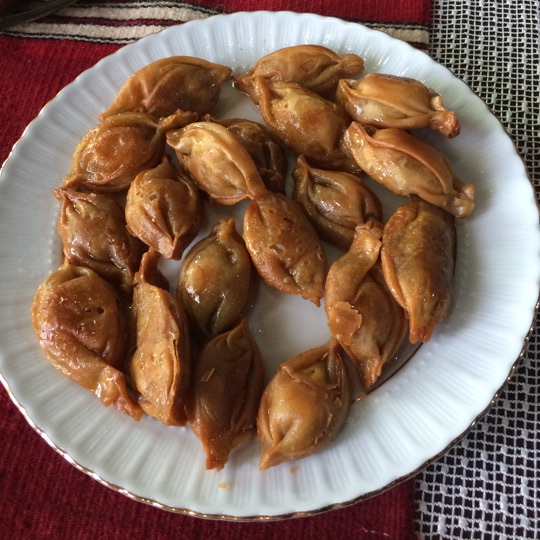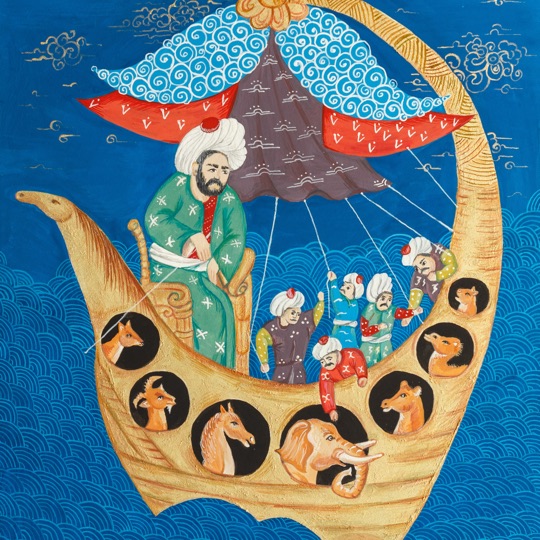Reframing Citriculture: Better Connections for Future
About Turkey & Mersin
TURKEY
A country connects continents and deep-rooted civilizations and combines cultures and values for centuries. An integrated and rooted geograpghy hosts its deep cultural heritage. A rich and diverse cultural art and cuisine reflects its intercultural ties and diversity. THIS IS TURKEY
Turkey has 18 cultural property inscribed on the UNESCO World Heritage List as of 2018. You may see 13 of them in below map.
İSTANBUL
İstanbul, previously called Constantinople, is one of the world’s greatest cities with its thousands of years of history.
Sitting at the crosroads of Europe and Asia, two continents unite in İstanbul which has become home to empires for centuries.
ÇUKUROVA REGION
Çukurova Region (means low plain), also known as Cilicia in ancient times, is composed of four cities: Mersin, Adana, Hatay and Osmaniye. The region provides most of the Citrus production in Turkey. Çukurova is known with its fertile land.

MERSİN
Pearl of the Meditterenean and Lands of the Citrus where the Sun and History Greets You
Mersin, formerly known as Mersina, is an important seaport city in South-central side of Turkey. It lies along the Mediterrenean Sea at the western end of the Cilician Plain, 40 miles West- southwest of Adana.
As far as the fertile lands of the city is an important place for citrus production, it is also a very important place for ancient settlement and Christianity. One of the lesser-known provinces of Turkey, Mersin has an astounding amount of historical sites, which stand as testimony for the many civilizations that inhabited its plains throughout the centuries.
From stunning castles to the remnants of once flourishing ancient cities, exploring Mersin is a dream for history buffs.
Cultural and Religious Tourism
St. Paul Church
 St. Paul’s Well, an important destination for pilgrimage, and St. Paul’s Church built in the 1850s to commemorate St. Paul. St. Paul, one of the leading figures of the Christianity, is believed to have had this church constructed as St. Paul Cathedral at Tarsus city center in 1102. It attracts attention by its Roman-style thick and high walls, deep windows with a wide internal side and a narrow external side and thick columns.
St. Paul’s Well, an important destination for pilgrimage, and St. Paul’s Church built in the 1850s to commemorate St. Paul. St. Paul, one of the leading figures of the Christianity, is believed to have had this church constructed as St. Paul Cathedral at Tarsus city center in 1102. It attracts attention by its Roman-style thick and high walls, deep windows with a wide internal side and a narrow external side and thick columns.
St. Paul Well
 It is a well located in a courtyard of a demolished house, where St. Paul is believed to have lived, in Tarsus city center. Recent excavations have unearthed some walls.
It is a well located in a courtyard of a demolished house, where St. Paul is believed to have lived, in Tarsus city center. Recent excavations have unearthed some walls.
Cave of the Seven Sleepers
 Eshab-ı Kehf, which was depicted in Kehf section of the Koran, is also known as “Seven Sleepers Cave” in public. Though there are various speculations for the place of the cave, Islamic scholars agree that the cave is located in Tarsus.
Eshab-ı Kehf, which was depicted in Kehf section of the Koran, is also known as “Seven Sleepers Cave” in public. Though there are various speculations for the place of the cave, Islamic scholars agree that the cave is located in Tarsus.
Aya Tekla Cave Church
 A popular site for religious pilgrimages, this ruined historic church within a cave was built during the Byzantine era and is dedicated to the saint Thecla, who was a saint of the early Christian church.
A popular site for religious pilgrimages, this ruined historic church within a cave was built during the Byzantine era and is dedicated to the saint Thecla, who was a saint of the early Christian church.
Hell & Heaven Caves
 Heaven Cave is a large pit formed by the collapse of the ceiling with chemical erosion.
Heaven Cave is a large pit formed by the collapse of the ceiling with chemical erosion.
It is written in the 4 line inscription on the entrance door of the church that this church was built by a devout person named Paulus in the 7th century dedicated to the Virgin Mary. A very large 452-step stone staircase descends into the jungle. The church is reached in step 300. At the end of the cave after the church, the sound of a mythological underground creek is heard. 75 m north of the Heaven Cave, the Hell Cave was formed likewise. The diameter of the mouth ring is 50 m and 75 m, the depth is 128 m. Since the edges are concave, it is not possible to go inside. According to mythology, Zeus defeated Typhon altınas face-fighting dragon who blazed the flames in a quarrel here and imprisoned him in the Pit of Hell for a while before closing it to the bottom of Mount Etna.
Archaeological Tourism
Mersin ranks first among Anatolian cities in terms of the number archaeological excavation sites. Museums and 10 excavation centers bringing the ruins of various civilizations to daylight
Maiden’s Castle
 Quite the sight from the shore, Kızkalesi (Maiden’s Castle) is on a small island, and experts believe it was built during the Byzantine Empire. The structure was developed further during the Armenian Kingdom of Cilicia, and by 1471, the Ottoman Empire captured it.
Quite the sight from the shore, Kızkalesi (Maiden’s Castle) is on a small island, and experts believe it was built during the Byzantine Empire. The structure was developed further during the Armenian Kingdom of Cilicia, and by 1471, the Ottoman Empire captured it.
Soli Pompeiopolis
 Founded around 700 BC, Soli was an ancient city and port in Cilicia until it was destroyed in the 1st century BC. It then became Pompeiopolis after Pompey the Great, a military and political leader of the late Roman Republic, rebuilt the city.
Founded around 700 BC, Soli was an ancient city and port in Cilicia until it was destroyed in the 1st century BC. It then became Pompeiopolis after Pompey the Great, a military and political leader of the late Roman Republic, rebuilt the city.
Adamkayalar
 As it is famous for its statues carved right into the rock surface, it’s no surprise that Adamkayalar literally translates to “man rocks.” Located on the southern end of the Toros Mountains, there’s no documented evidence regarding the origins of these ancient stone figures.
As it is famous for its statues carved right into the rock surface, it’s no surprise that Adamkayalar literally translates to “man rocks.” Located on the southern end of the Toros Mountains, there’s no documented evidence regarding the origins of these ancient stone figures.
Mamure Castle
 The rulers of the Armenian Kingdom of Cilicia built this amazing castle, located on the Mediterranean coast, using the foundation of an already existent Roman structure constructed in the 4th century. A sturdy protector against pirates, the castle was enlarged by the Seljuk Turks and changed hands numerous times until it was annexed by the Ottoman Empire in 1469.
The rulers of the Armenian Kingdom of Cilicia built this amazing castle, located on the Mediterranean coast, using the foundation of an already existent Roman structure constructed in the 4th century. A sturdy protector against pirates, the castle was enlarged by the Seljuk Turks and changed hands numerous times until it was annexed by the Ottoman Empire in 1469.
Roman Road
 Believed to have been built in the 1st century AD by the Roman Empire, this historic stone pavement may have been part of the main road that connected Cilicia to Cappadocia.
Believed to have been built in the 1st century AD by the Roman Empire, this historic stone pavement may have been part of the main road that connected Cilicia to Cappadocia.
Citrus Festival
 The host area and city of ICC 2020, The Mediterranean basin, in which Mersin is located, has an important place in the world citrus sector and citrus history. It is known that citrus spreaded to fertile lands of Anatolia and the Mediterranean and then to the Middle East with the introduction of Alexander the Great to the geography.
The host area and city of ICC 2020, The Mediterranean basin, in which Mersin is located, has an important place in the world citrus sector and citrus history. It is known that citrus spreaded to fertile lands of Anatolia and the Mediterranean and then to the Middle East with the introduction of Alexander the Great to the geography.
ICC 2020 calls you to one of the most fertile grounds of citrus worlwide. Mersin, which will host the ICC in 2020, celebrates the fruitfulness of the citrus-blooming lands as well as the historical memory of the region with its annual Citrus Festival was established in 2010. Each year, the festival is held in a weekend in November. A parade of various life size objects made of citrus and folkloric groups from many foreign countries takes place. Fashion shows and dance shows of the folkloric groups both in the city and in Kızkalesi continue two days long.

Mersin Highlands and Plateau Tourism

Water Sports, Rafting and Home of Caretta Carrettas


The natural landscape of Mersin province is also suitable for a variety of sports activities. You can spend some adrenaline filled times by engaging in outdoor activities like scuba diving, trekking, mountaineering, paragliding or jeep safari. Mersin is also one of the most popular nesting sites for Caretta Carettas aslong the Mediterrenean.
Turkish and Mediterrenean Cuisine
Hope you brought your appettite.
Turkish cousine is calling you to a feast!
Turkish cuisine rich with centuries of history while experiencing a renewal with new generation of chefs and food lovers offers much to explore. You can find a great variety of mouth watering dishes in Turkish cuisine, which is mostly the heritage of Ottoman cuisine. It is the mixture and refinement of Central Asian, Middle Eastern and Balkan cuisines. Therefore it is impossible to fit Turkish cuisine into a short list.
Palace Food
 Turkish cuisine is largely the heritage of Ottoman cuisine, which can be described as a fusion and refinement of Central Asian, Middle Eastern and Balkan cuisines. Turkish cuisine also influenced these cuisines and other neighbouring cuisines, as well as westernEuropean recipes.
Turkish cuisine is largely the heritage of Ottoman cuisine, which can be described as a fusion and refinement of Central Asian, Middle Eastern and Balkan cuisines. Turkish cuisine also influenced these cuisines and other neighbouring cuisines, as well as westernEuropean recipes.
Mediterranean and Mersin Food




Mediterranean and Mersin has a multicultural and diversed cuisine due to sea trade on Mediterranean Sea and Taurus mountains.
Turkish Art
Traditional Art of Miniatures, Marbling and Calligraphy


Traditional Turkish art has many facets including metal, glass, wood, and leather artwork as well as handwritten books, lamps, and stone carvings. However, the traditional art of miniatures, marbling, and calligraphy are some of the most well-known.
Point Lace


Point lace is a traditional art in Mersin, mostly done by local women.



